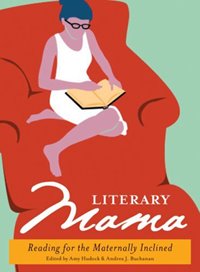"Each night Pecola prayed for
blue eyes.
In her eleven years, no one had
ever noticed Pecola. But with blue
eyes, she thought, everything
would be different. She would be
so pretty that her parents would
stop fighting. Her father
would stop drinking. Her brother
would stop running away. If
only she could be beautiful.
If only people would look at her."
(Back Cover)
As you may have deduced from the introduction, this is a story about a young, lonely, black girl, Pecola Breedlove, from a small Midwestern town in the US, who wants blue eyes more than anything else in the world. She wants blue eyes not so much because she thinks they're beautiful, but because she hates her black skin and eyes which she thinks are ugly. She imagines that blue eyes is what it will take to make her popular and loved by her friends and family. This obession with having blue eyes, the family's poverty, being on the lower rung of the racial heirarchy,the lack of friends and her very low self-esteem all contribute to driving Pecola slowly insane and she slips into a fantasy world where she has bluer-than-blue eyes and is the prettiest girl in the world.
As I read this book, I thought we all have a little Pecola inside of us. Some of us, like her, think we are not pretty enough, with others it's an issue with weight. With some they think they are not rich enough or smart enough. Seems like we all have our own "blue eyes" that we keep hankering after. If only we would come to love ourselves as we are, imperfections and all, maybe we'd make life easier for ourselves?
In any case, who sets the standards for beauty? Who decides that white and not black is beautiful; that size 6 is nicer-looking than size 8? Why was 12-year old Pecola so filled with self-loathing only because of the colour of her skin? Isn't this what we are doing to our kids (especially our girls) today, too? If they are size 6 or over, we want to put them on a diet. We are creating a whole new generation of Pecolas without even being aware of it.
Toni Morrison's novel besides exploring issues of beauty, race, poverty, discrimination, abandonment, and so on, also educates one on the hardships suffered by African-American people in the 1940's. Toni Morrison is an African-American writer and she grew up in the 1940's so I'm sure the conditions facing black people as she describes them in her books are credible. In fact, the story of Pecola Breedlove is said to be that of one of Morrison's childhood friends.
This book won the Nobel Prize for Literature. ( I don't remember the year) and it is so deserving of the prize. Not only has Ms. Morrison written a novel with an achingly beautiful story, but the language, ahhh, each sentence is so beautifully constructed that I was gulping them down like it was my last meal.
This book will definitely go into my permenant collection. I know many of you will have read this book already , would love to hear your thoughts on it.












